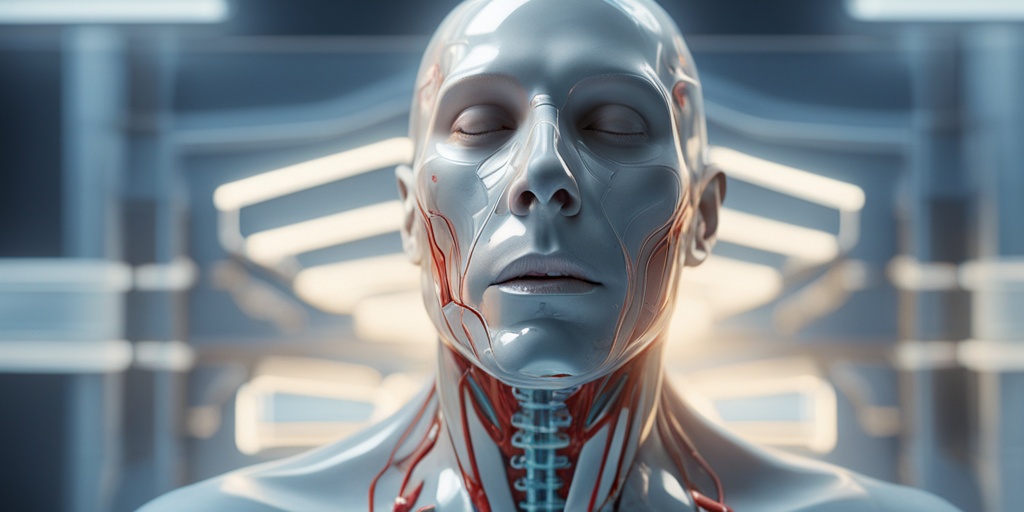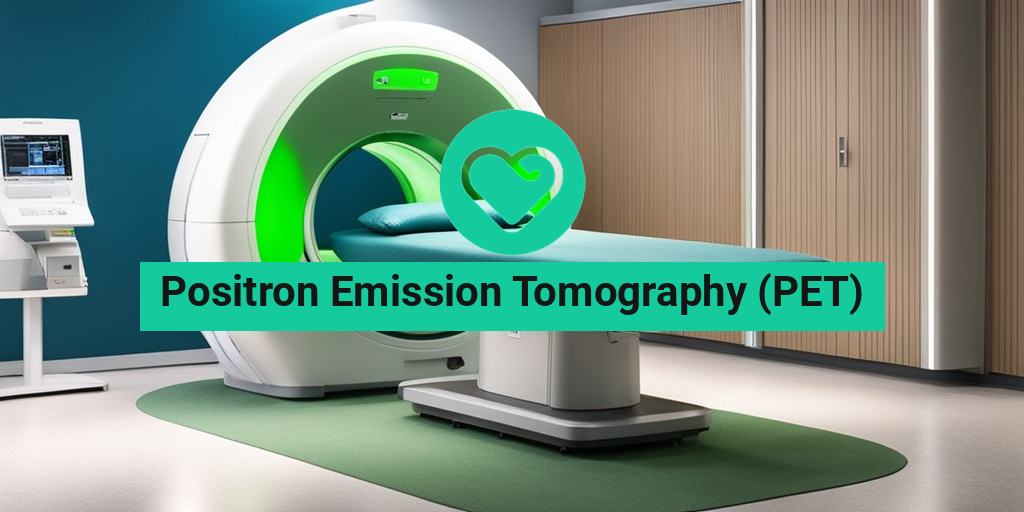What is Positron Emission Tomography (PET)?
Positron Emission Tomography, commonly referred to as PET, is a non-invasive medical imaging technique that uses small amounts of radioactive materials to visualize and measure the metabolic activity of cells within the body. This powerful diagnostic tool helps doctors identify and monitor various diseases, including cancer, neurological disorders, and cardiovascular disease.
In simple terms, PET scans provide a unique “snapshot” of the body’s internal functions, allowing healthcare professionals to diagnose and treat diseases more effectively. But how does it work? Let’s dive deeper into the world of PET scans!
How Does a PET Scan Work?
A PET scan typically involves injecting a small amount of a radioactive substance, called a radiotracer, into the patient’s vein. This radiotracer is designed to target specific cells or tissues in the body, such as cancer cells or areas of inflammation. The radiotracer emits positrons, which are tiny particles that collide with electrons, producing gamma rays that can be detected by the PET scanner.
The PET Scan Process
Here’s a step-by-step overview of the PET scan process:
- Preparation: The patient is injected with the radiotracer, which takes about 30-60 minutes to distribute throughout the body.
- Scanning: The patient lies down on a table that slides into the PET scanner, a large, doughnut-shaped machine. The scanner detects the gamma rays emitted by the radiotracer and converts them into detailed, 3D images of the body.
- Image Reconstruction: The PET scanner’s computer system reconstructs the images, which are then reviewed by a radiologist or other healthcare professional.
PET scans can show:
- Areas of high metabolic activity, such as cancer cells
- Regions of inflammation or infection
- Brain function and activity
- Heart function and blood flow
By combining PET scans with other imaging modalities, such as CT or MRI, healthcare professionals can gain a more comprehensive understanding of the body’s internal workings. This information can be used to develop personalized treatment plans, monitor disease progression, and improve patient outcomes.
At Yesil Health AI (yesilhealth.com), we believe in empowering individuals with evidence-based health answers. If you have questions about PET scans or other medical imaging techniques, our AI-powered platform is here to provide you with accurate and reliable information. 🤖
In conclusion, Positron Emission Tomography (PET) is a powerful diagnostic tool that has revolutionized the field of medical imaging. By understanding how PET scans work, we can better appreciate the importance of this technology in improving healthcare outcomes. 💡

Uses of Positron Emission Tomography (PET) Scan
Positron Emission Tomography (PET) scans have revolutionized the field of medical imaging, offering a non-invasive and highly accurate way to diagnose and monitor various diseases. From cancer to neurological disorders, PET scans have a wide range of applications that have transformed the way healthcare professionals approach patient care.
Cardiovascular Disease Diagnosis
PET scans play a crucial role in diagnosing and managing cardiovascular diseases, such as coronary artery disease and heart failure. By injecting a small amount of radioactive material into the bloodstream, PET scans can identify areas of the heart that are not receiving adequate blood flow, allowing doctors to pinpoint potential blockages and develop effective treatment plans.
Neurological Disorders
PET scans are also used to diagnose and monitor neurological disorders, such as Alzheimer’s disease, Parkinson’s disease, and epilepsy. By visualizing the brain’s metabolic activity, PET scans can help doctors identify areas of abnormal brain function, allowing for earlier diagnosis and more targeted treatment.
Infectious Disease Diagnosis
PET scans have been shown to be effective in diagnosing and monitoring infectious diseases, such as tuberculosis. By using radiotracers that target specific bacteria, PET scans can help doctors identify areas of infection and track the effectiveness of treatment.
PET Scan for Cancer Diagnosis
Cancer diagnosis is one of the most significant applications of PET scans. By using radiotracers that are attracted to cancer cells, PET scans can help doctors identify tumors, track the spread of cancer, and monitor the effectiveness of treatment.
Early Cancer Detection
PET scans can detect cancer at an early stage, even before symptoms appear. This allows for earlier treatment and improved outcomes for patients. In fact, PET scans have been shown to detect cancer up to 6 months earlier than other imaging modalities.
Staging and Monitoring Cancer
PET scans are also used to stage cancer, which involves determining the extent of the disease. By identifying areas of high metabolic activity, PET scans can help doctors determine whether cancer has spread to other parts of the body. Additionally, PET scans can be used to monitor the effectiveness of cancer treatment, allowing doctors to adjust treatment plans as needed.
Overall, PET scans have revolutionized the field of medical imaging, offering a powerful tool for diagnosing and managing a wide range of diseases. From cardiovascular disease to cancer, PET scans have the potential to improve patient outcomes and save lives. 💊

PET Scan for Neurological Disorders
Positron Emission Tomography (PET) scans have revolutionized the field of neurology by providing valuable insights into the workings of the brain. This non-invasive imaging technique has become an essential tool for diagnosing and monitoring various neurological disorders. In this article, we’ll delve into the role of PET scans in neurological disorders and explore how they’re helping doctors and researchers better understand the complexities of the brain.
Diagnosing Neurological Disorders with PET Scans
PET scans use small amounts of radioactive materials called radiotracers to visualize the brain’s metabolic activity. This allows doctors to identify areas of abnormal brain function, which can be indicative of various neurological disorders. Some of the most common neurological disorders that PET scans can help diagnose include:
- Alzheimer’s disease: PET scans can detect the buildup of beta-amyloid plaques, a hallmark of Alzheimer’s disease, allowing for early diagnosis and treatment.
- Parkinson’s disease: PET scans can help identify dopamine deficiencies in the brain, which are characteristic of Parkinson’s disease.
- Brain tumors: PET scans can distinguish between benign and malignant tumors, helping doctors develop effective treatment plans.
- Epilepsy: PET scans can identify areas of abnormal brain activity that may be causing seizures, allowing for more targeted treatment.
Monitoring Neurological Disorders with PET Scans
PET scans are not only useful for diagnosing neurological disorders but also for monitoring treatment effectiveness and disease progression. By tracking changes in brain activity over time, doctors can:
- Assess treatment response: PET scans can help doctors determine whether a particular treatment is working and make adjustments as needed.
- Monitor disease progression: PET scans can track changes in brain activity over time, allowing doctors to anticipate and prepare for potential complications.
🧠 By providing valuable insights into brain function and activity, PET scans have become an indispensable tool in the diagnosis and management of neurological disorders.
PET Scan for Cardiovascular Disease
While PET scans are often associated with neurological disorders, they also play a crucial role in the diagnosis and management of cardiovascular disease. In this section, we’ll explore how PET scans are helping doctors and researchers better understand the complexities of the heart.
Diagnosing Cardiovascular Disease with PET Scans
PET scans can help diagnose cardiovascular disease by visualizing blood flow and metabolic activity in the heart. This allows doctors to:
- Identify areas of reduced blood flow: PET scans can detect areas of the heart that are not receiving adequate blood flow, which can be indicative of coronary artery disease.
- Detect cardiac inflammation: PET scans can identify areas of inflammation in the heart, which can be a sign of cardiac disease.
Monitoring Cardiovascular Disease with PET Scans
PET scans are also useful for monitoring treatment effectiveness and disease progression in cardiovascular disease. By tracking changes in cardiac activity over time, doctors can:
- Assess treatment response: PET scans can help doctors determine whether a particular treatment is working and make adjustments as needed.
- Monitor disease progression: PET scans can track changes in cardiac activity over time, allowing doctors to anticipate and prepare for potential complications.
❤️ By providing valuable insights into cardiac function and activity, PET scans are helping doctors and researchers better understand the complexities of the heart and develop more effective treatments for cardiovascular disease.

Risks and Side Effects of PET Scan
While Positron Emission Tomography (PET) scans are generally considered safe, there are some potential risks and side effects to be aware of. It’s essential to discuss these with your doctor before undergoing a PET scan, especially if you have any underlying medical conditions or concerns.
Common Side Effects
The most common side effects of a PET scan are mild and temporary. These may include:
- Fear or anxiety related to the test itself or the potential results
- Pain or discomfort at the injection site where the radiotracer is administered
- Dizziness or lightheadedness due to the radiotracer or lying still for an extended period
- Nausea or vomiting in rare cases, usually due to the radiotracer
Rare but Serious Side Effects
In rare cases, more serious side effects can occur. These may include:
- Allergic reactions to the radiotracer, which can cause hives, itching, or difficulty breathing
- , such as a heart attack or stroke, in people with pre-existing heart conditions
- in people with pre-existing kidney disease
Special Considerations
There are certain groups of people who may need to take extra precautions or avoid PET scans altogether. These include:
- Pregnant or breastfeeding women, as the radiotracer may pose a risk to the fetus or baby
- , such as kidney disease, heart disease, or bleeding disorders
- , such as blood thinners or medications that affect the kidneys
It’s crucial to discuss any concerns or questions you have with your doctor before undergoing a PET scan. They can help you weigh the benefits and risks and determine if a PET scan is right for you.
—
Benefits of Positron Emission Tomography (PET) Scan
Positron Emission Tomography (PET) scans offer numerous benefits in diagnosing and monitoring various medical conditions. Here are some of the advantages of PET scans:
Accurate Diagnosis
PET scans provide highly accurate images of the body’s internal structures and functions. This allows doctors to:
- and determine its stage and progression
- , such as Alzheimer’s disease or Parkinson’s disease
- and detect blockages in the heart
Personalized Treatment
PET scans help doctors develop personalized treatment plans by:
- for individual patients
- and making adjustments as needed
- of cancer or other conditions
Early Detection and Prevention
PET scans can detect conditions in their early stages, allowing for:
- and treatment, which can improve outcomes
- and reducing the risk of further damage
- and quality of life
Overall, PET scans offer a powerful diagnostic tool that can help doctors provide more accurate diagnoses, develop personalized treatment plans, and improve patient outcomes. 💊

Frequently Asked Questions about Positron Emission Tomography (PET)
What is Positron Emission Tomography (PET)?
Positron Emission Tomography (PET) is a non-invasive medical imaging test that uses small amounts of radioactive materials called radiotracers to visualize and measure the metabolic activity of cells in the body.
How does a PET scan work?
A PET scan works by detecting the radiation emitted by the radiotracers, which are absorbed by the body’s cells. The scanner then converts the radiation into 3D images, allowing doctors to visualize the body’s internal structures and functions.
What are PET scans used for?
PET scans are used to diagnose and monitor a wide range of conditions, including cancer, neurological disorders, and cardiovascular disease. They can also be used to evaluate the effectiveness of treatments and detect abnormalities in the brain, heart, and other organs.
Are PET scans safe?
PET scans are generally safe and do not cause any significant side effects. The radiotracers used in PET scans are designed to be safe and are quickly eliminated from the body.
How long does a PET scan take?
The length of a PET scan can vary depending on the type of scan and the area of the body being imaged. On average, a PET scan can take anywhere from 30 minutes to several hours.
What are the benefits of PET scans?
The benefits of PET scans include:
- Early detection and diagnosis of diseases
- Accurate monitoring of treatment effectiveness
- Non-invasive and painless procedure
- Ability to visualize and measure cellular activity
Can I eat or drink before a PET scan?
It’s generally recommended to fast for at least 6 hours before a PET scan, and to avoid consuming caffeine and sugar for at least 24 hours before the scan. Your doctor or technician will provide specific instructions on how to prepare for the scan.
What happens after a PET scan?
After a PET scan, you can resume your normal activities immediately. The radiotracers used in the scan are quickly eliminated from the body, and you will not experience any side effects. Your doctor will review the scan results with you and discuss any further treatment or testing that may be necessary.
Can children and pregnant women have PET scans?
PET scans can be performed on children and pregnant women, but the decision to do so should be made on a case-by-case basis. The risks and benefits of the scan should be carefully weighed, and alternative imaging tests may be recommended.
How much does a PET scan cost?
The cost of a PET scan varies depending on the location, type of scan, and insurance coverage. On average, a PET scan can cost anywhere from $1,000 to $5,000 or more.
Are PET scans covered by insurance?
Most insurance plans, including Medicare and Medicaid, cover PET scans when they are deemed medically necessary. However, it’s always best to check with your insurance provider to confirm coverage.




